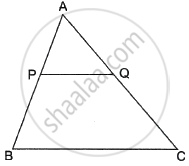Advertisements
Advertisements
प्रश्न
In the given figure ABC and CEF are two triangles where BA is parallel to CE and AF: AC = 5: 8.
(i) Prove that ΔADF ∼ ΔCEF
(ii) Find AD if CE = 6 cm
(iii) If DF is parallel to BC find area of ΔADF: area of ΔABC.
उत्तर
(i) In ΔADF and ΔCFE
∠DAF = ∠FCE ...(alternate angles)
∠AFD = ∠CEF ...(vertically opp. angles)
∠ADF = ∠CEF
∴ ΔADF ∼ ΔCEF ...(by A.A.)
Hence Proved.
(ii) ΔADF ∼ ΔCEF
∴ `"AD"/"CE" = "AF"/"FC"`
FC = AC - AF
= 8 - 5 = 3
∴ `"AD"/(6) = (5)/(3)`
⇒ AD = 10 cm.
(iii) DF | | BC ∴ ΔADF ∼ ΔABC
∵ ∠D = ∠B and ∠F = ∠C.
∴ `"Ar. of ΔADF"/"Ar. of ΔABC" = "AF"^2/"AC"^2`
= `(5/8)^2 = (25)/(64)`.
APPEARS IN
संबंधित प्रश्न
E and F are points on the sides PQ and PR, respectively, of a ΔPQR. For the following case, state whether EF || QR.
PQ = 1.28 cm, PR = 2.56 cm, PE = 0.18 cm and PF = 0.36 cm
In the adjoining figure, ABC is a right angled triangle with ∠BAC = 90°.
1) Prove ΔADB ~ ΔCDA.
2) If BD = 18 cm CD = 8 cm Find AD.
3) Find the ratio of the area of ΔADB is to an area of ΔCDA.
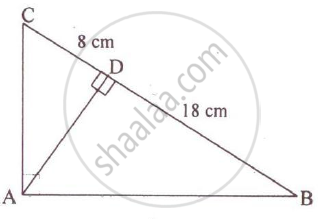
E and F are the points in sides DC and AB respectively of parallelogram ABCD. If diagonal AC
and segment EF intersect at G; prove that:
In each of the given pairs of triangles, find which pair of triangles are similar. State the similarity criterion and write the similarity relation in symbolic form:
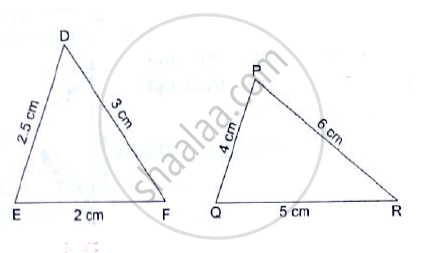
In the given figure, DB⊥BC, DE⊥AB and AC⊥BC.
Prove that `(BE)/(DE)=(AC)/(BC)`
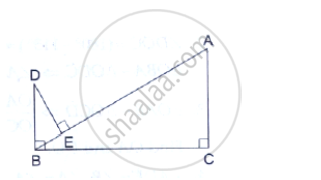
Find the area of the triangle ABC with the coordinates of A as (1, −4) and the coordinates of the mid-points of sides AB and AC respectively are (2, −1) and (0, −1).
In ΔABC, BP and CQ are altitudes from B and C on AC and AB respectively. BP and CQ intersect at O. Prove that
(i) PC x OQ = QB x OP
(ii) `"OC"^2/"OB"^2 = ("PC" xx "PO")/("QB" xx "QO")`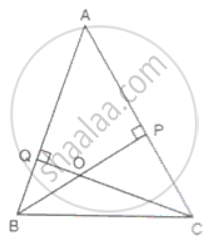
Two similar triangles will always have ________ angles
In a square of side 10 cm, its diagonal = ______.
In ΔABC, PQ || BC. If PB = 6 cm, AP = 4 cm, AQ = 8 cm, find the length of AC.
